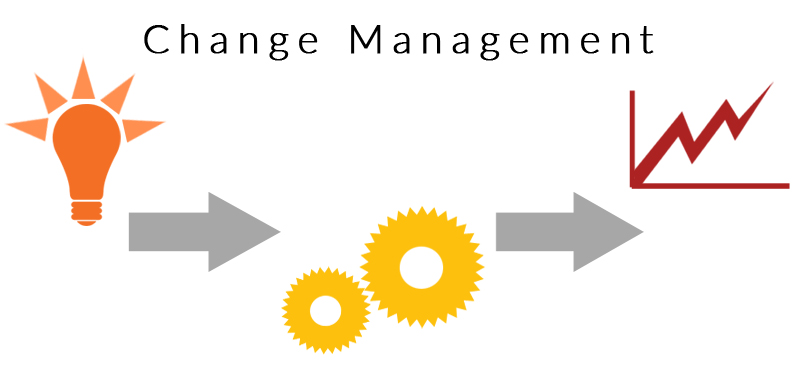Change management is needed not only when new software is introduced, but also when new business processes are implemented.
- Increase urgency
People need inspiration to change. The objectives of the project should be shared with the employees. This shouldn’t just be a stock standard statement, but should come from department leaders that can make the statement relevant to their department. If people know why change is necessary, they are more likely to embrace it.
- Communicate for buy-in
Communicate the essential information in a simple way. Have an opportunity for employees to express their opinions and to respond to them. This could involve including an opportunity for the client to use the system and provide feedback. Although clients don’t always use this time effectively, having the opportunity for them to do so, and to respond to their comments, positions your company as willing to listen and open to suggestions made by users.
- Make change stick
Change doesn’t happen overnight. It need consistent monitoring to ensure it sticks. As project leaders, you won’t always be on-site to enforce this. Instead, the client’s management team needs to be equipped and empowered to manage this change. This means working with management to teach them a few tricks that can be helpful.
- Nudge theory: This is the idea that people respond well to being “nudged” in the right direction, instead of being enforced or confronted. A suggestion could be in morning meetings have one person comment on how they have found trialling the system to remind others to do so.
- Priming: Prepare people for thinking. Let staff know ahead of time that change will take place – let them know before your company is on-site for analysis. This minimises resistance to change, because they have prepared themselves for the change that will come. This can also involve using certain language when talking about change, such as ‘exciting’, ‘simpler’ and ‘easier’.
- Phrasing: ‘How’ is more positive than ‘Why’, ‘Challenge’ is more positive than ‘Difficulty’, and “Do X’ results in greater change than ‘Don’t do Y’.
- Statement of change: Verbal and written statements, including why change is needed, faith in the company to be able to change, and provide a roadmap for change.


